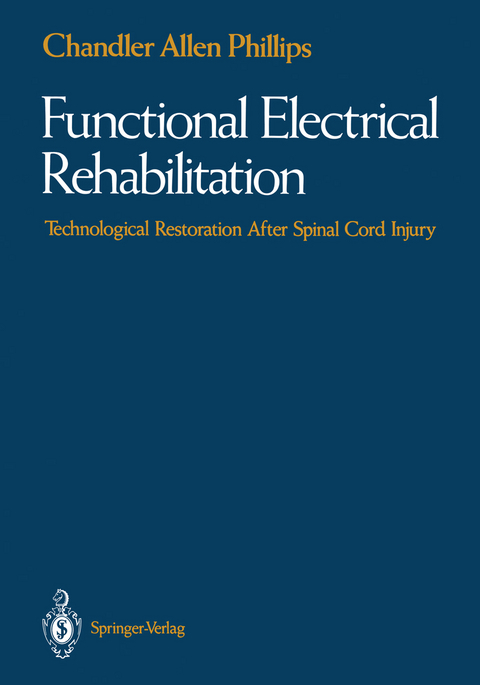
Functional Electrical Rehabilitation
Springer-Verlag New York Inc.
978-1-4612-7796-5 (ISBN)
1 Theory and Background.- 1 The Theory and Background of Functional Electrical Rehabilitation.- 2 Control of Extremity Motor Prostheses: The Motor Feedback Applications.- 3 Control of Extremity Motor Prostheses: The Sensory Feedback Applications.- 2 Stationary Exercise Rehabilitation.- 4 Stationary Exercise Rehabilitation: Introduction and Overview.- 5 Acute Effects with the Leg Exerciser System: The Physiological Process.- 6 Acute Effects with the Exercise Bicycle System: The Physiological Process.- 7 Chronic Exercise Effects: The Therapeutic Outcome.- 3 Ambulatory Exercise Rehabilitation.- 8 Ambulatory Exercise Rehabilitation: Introduction and Overview.- 9 Ambulatory Exercise Systems.- 10 Ambulatory Exercise Procedures and Effects.- 4 Prescription of Functional Electrical Rehabilitation.- 11 The Medical Criteria: Physician Guidelines for Patient Participation.- 12 The Functional Electrical Rehabilitation Patient Evaluation and Prescription Program.- Epilogue.
| Zusatzinfo | XIII, 209 p. |
|---|---|
| Verlagsort | New York, NY |
| Sprache | englisch |
| Maße | 178 x 254 mm |
| Themenwelt | Geisteswissenschaften ► Psychologie ► Klinische Psychologie |
| Medizin / Pharmazie ► Gesundheitsfachberufe | |
| Medizinische Fachgebiete ► Chirurgie ► Neurochirurgie | |
| Medizinische Fachgebiete ► Chirurgie ► Unfallchirurgie / Orthopädie | |
| Medizin / Pharmazie ► Medizinische Fachgebiete ► Psychiatrie / Psychotherapie | |
| Medizin / Pharmazie ► Pflege | |
| Medizin / Pharmazie ► Physiotherapie / Ergotherapie ► Orthopädie | |
| Medizin / Pharmazie ► Physiotherapie / Ergotherapie ► Rehabilitation | |
| Naturwissenschaften ► Physik / Astronomie ► Angewandte Physik | |
| Technik ► Medizintechnik | |
| Schlagworte | Biomedizinische Technik • Neurochirurgie • Orthopädie • Rehabilitation • Wirbelsäulenverletzung |
| ISBN-10 | 1-4612-7796-5 / 1461277965 |
| ISBN-13 | 978-1-4612-7796-5 / 9781461277965 |
| Zustand | Neuware |
| Informationen gemäß Produktsicherheitsverordnung (GPSR) | |
| Haben Sie eine Frage zum Produkt? |
aus dem Bereich


